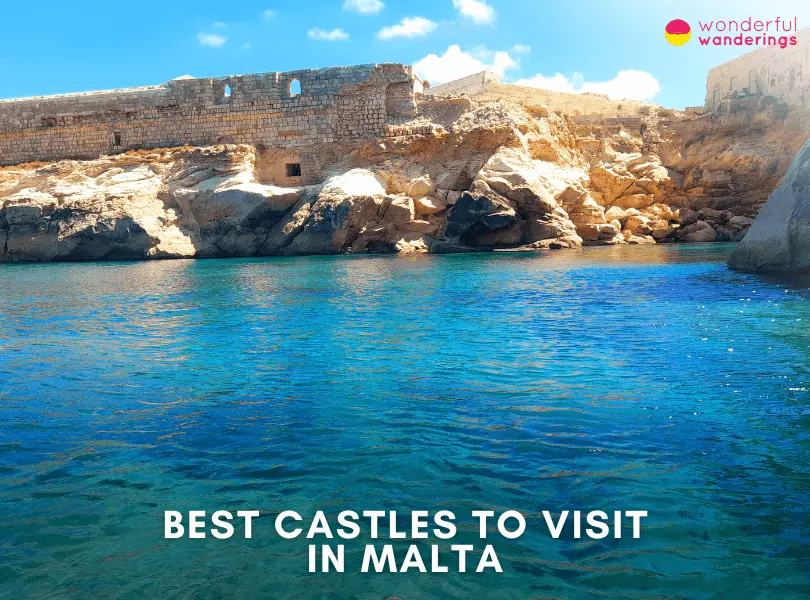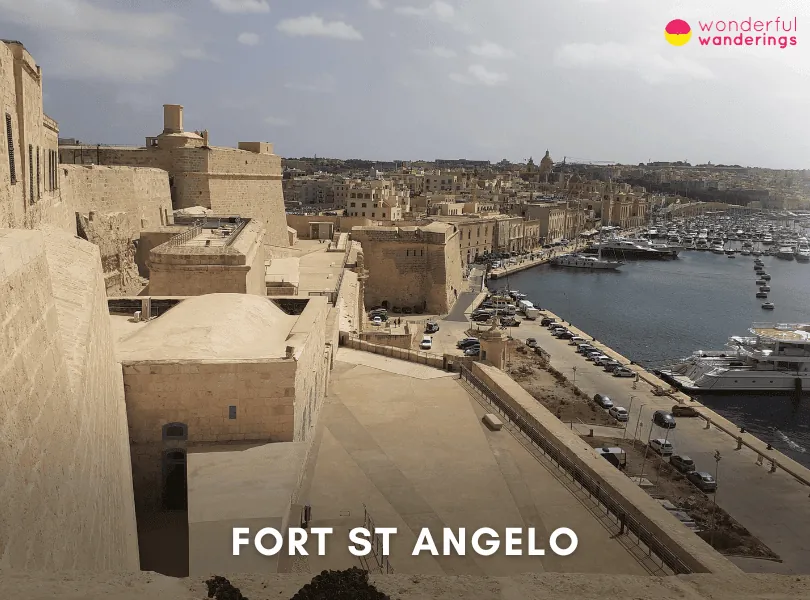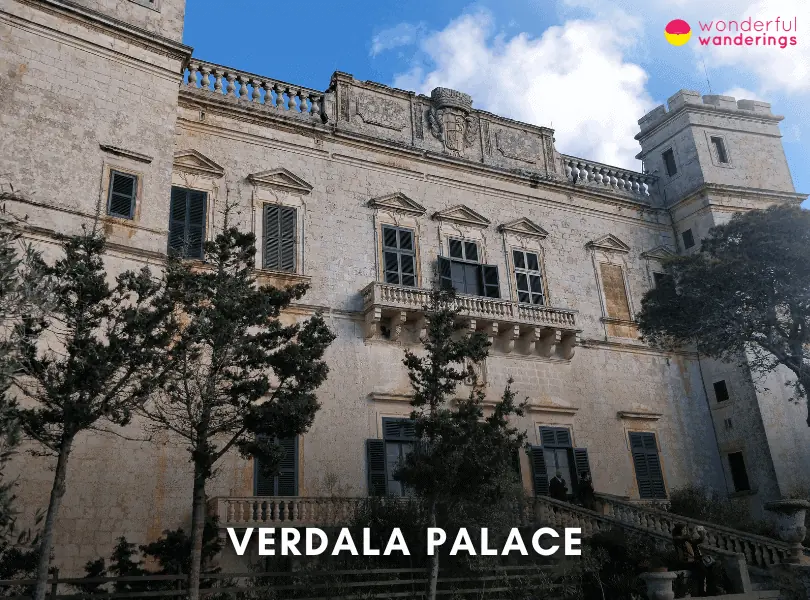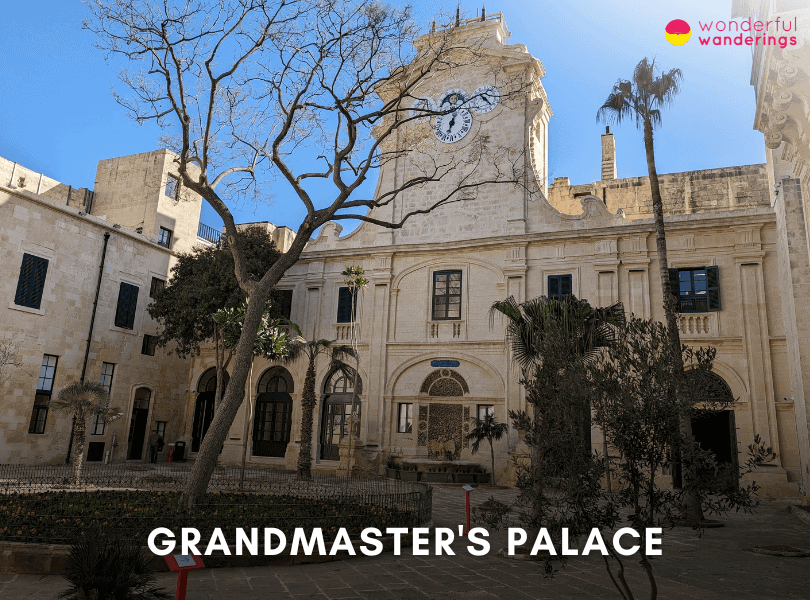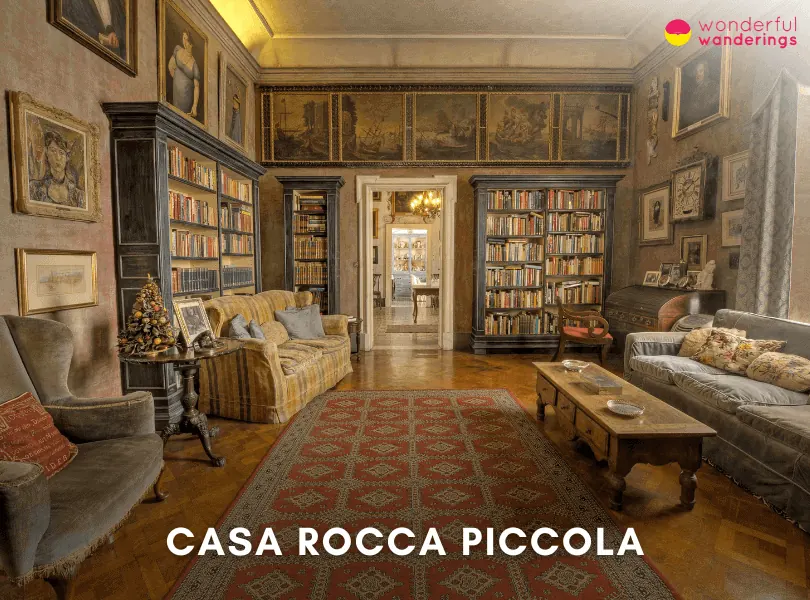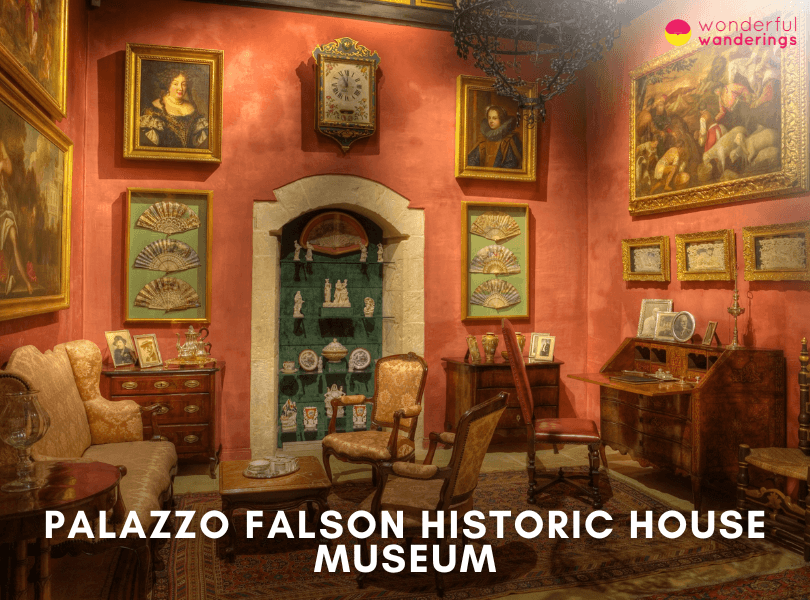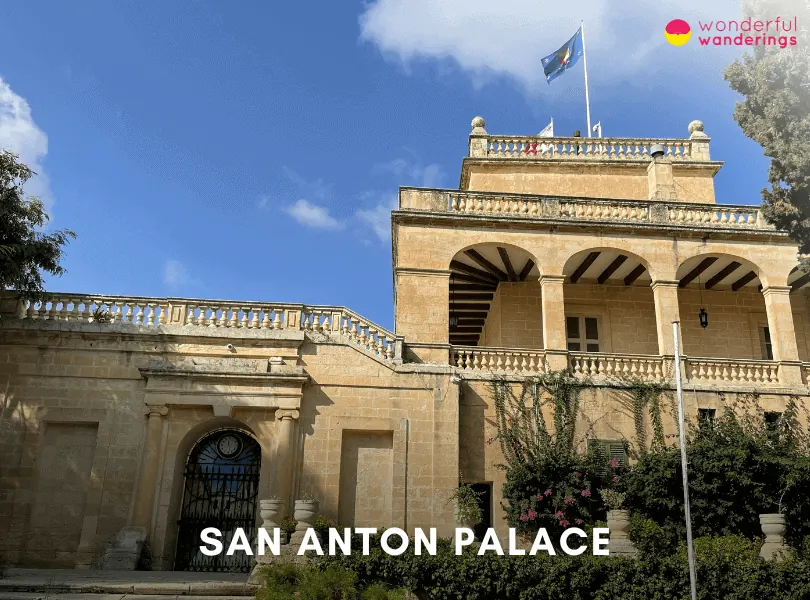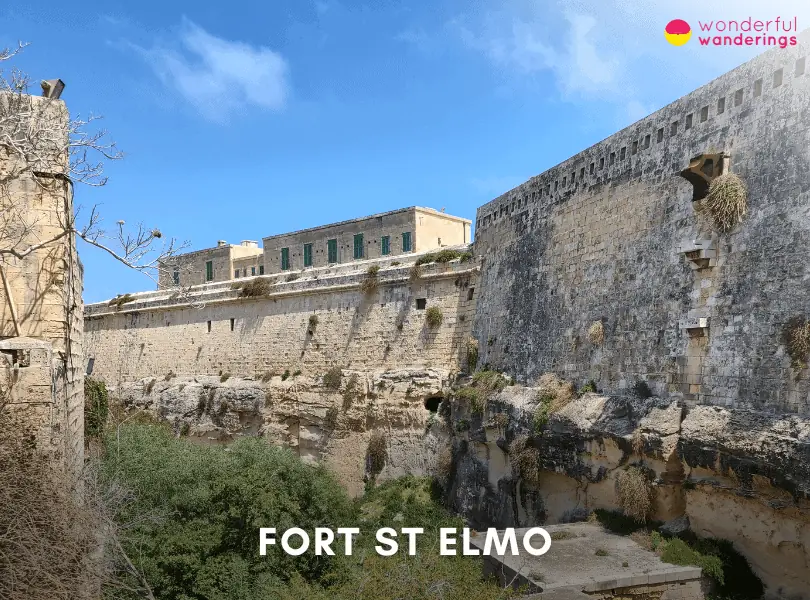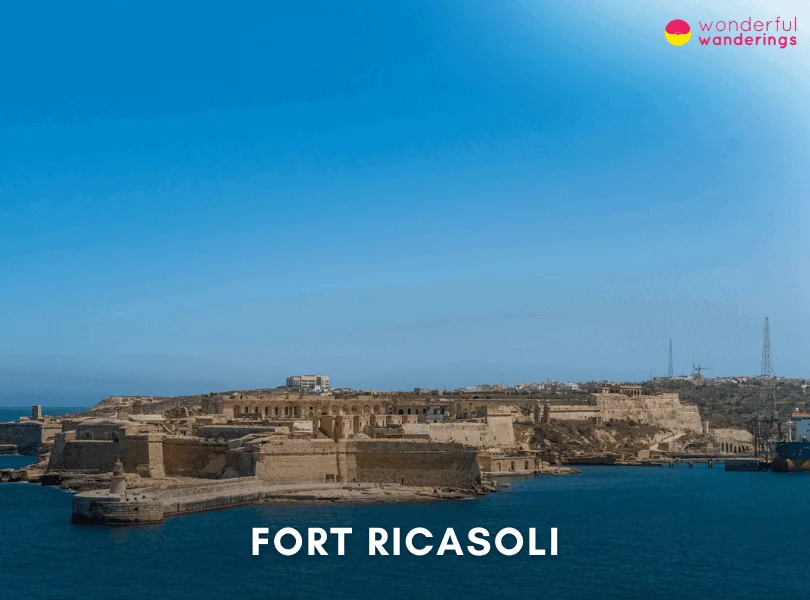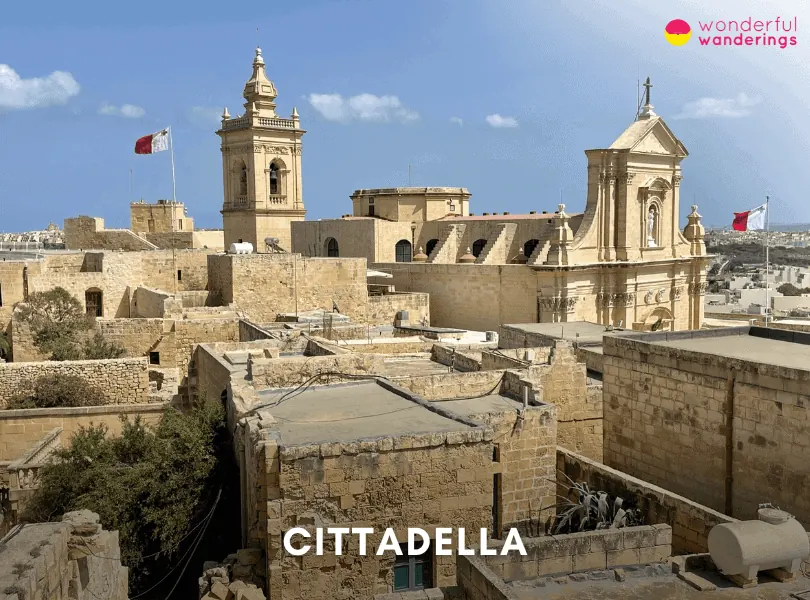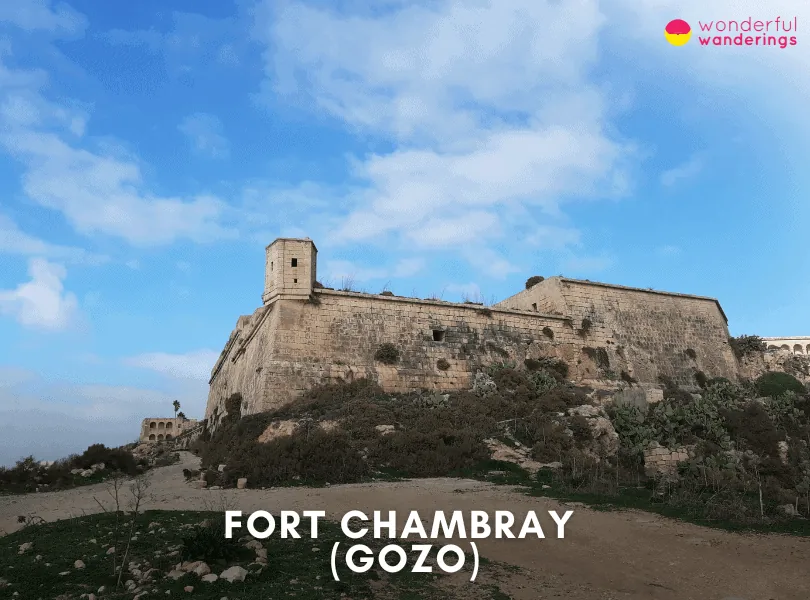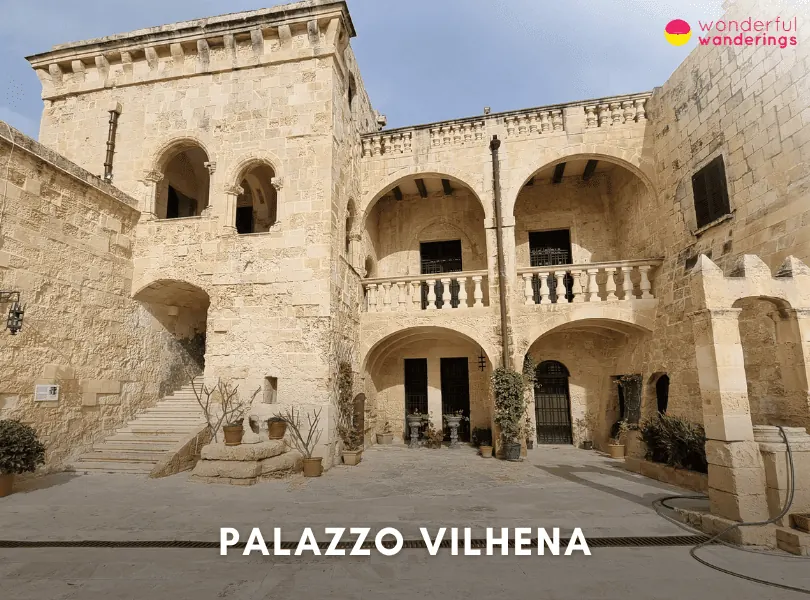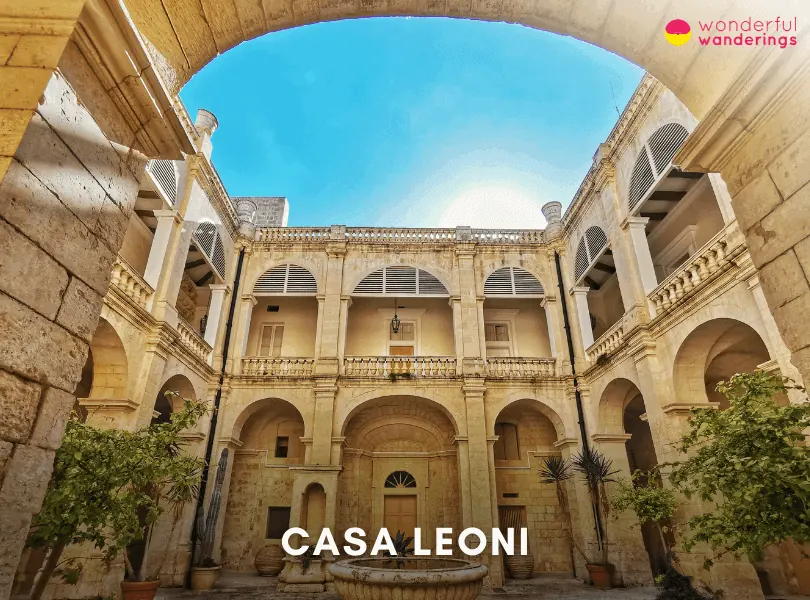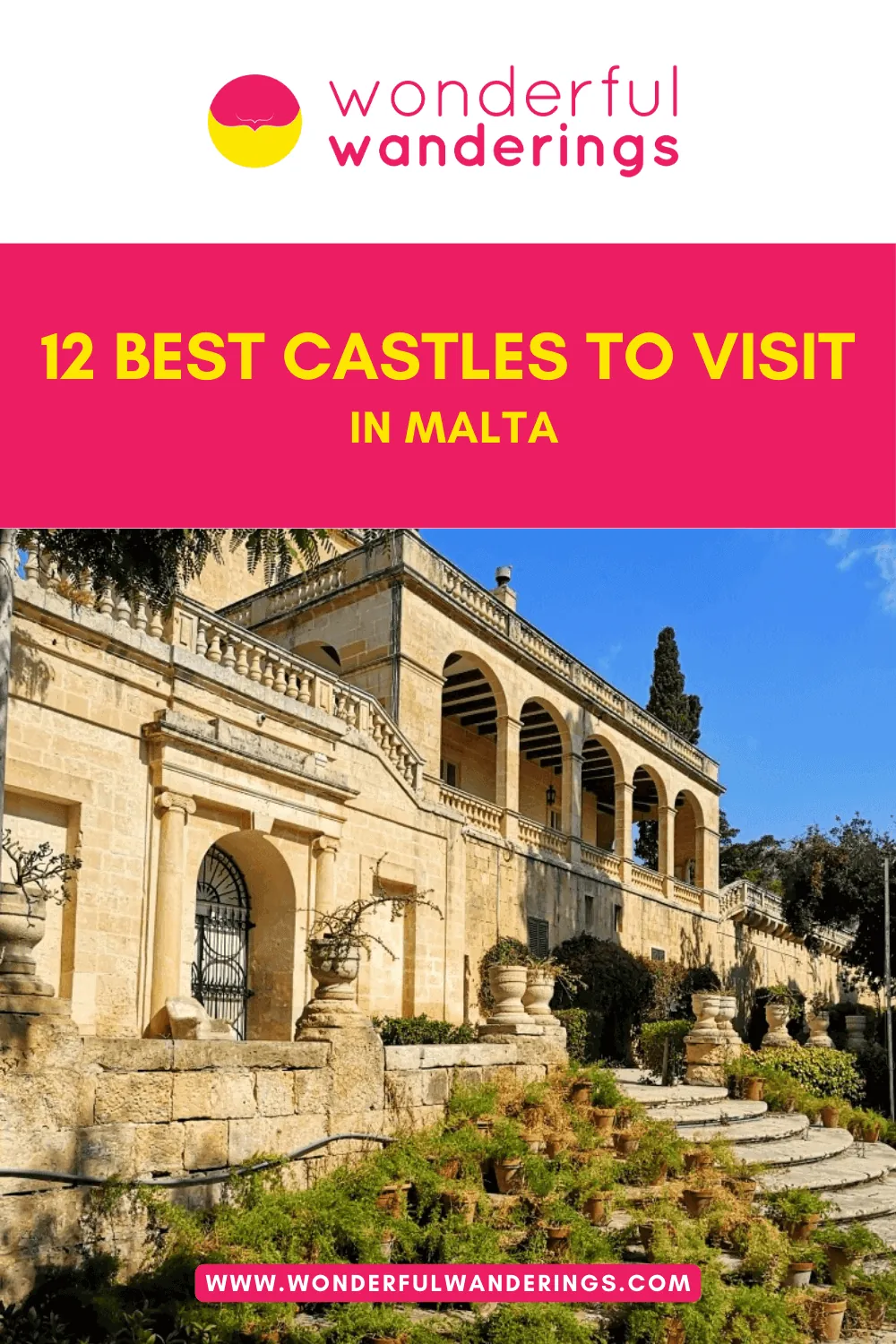Malta is home to some of the Mediterranean’s most intriguing castles and palaces. Fort St Angelo, dating back to medieval times, was a pivotal Knights Hospitaller base and has been a naval base, prison and now a tourist site. Verdala Palace, built in 1586, was a hunting lodge turned summer residence for the Knights and currently serves as the summer residence of Malta’s President. Casa Rocca Piccola in Valletta, constructed in the 16th century, offers a rich display of Maltese nobility and history. San Anton Palace, originally a 17th-century villa for Grand Master Antoine de Paule, now functions as the President’s residence, with its gardens open to the public. Fort St Elmo, instrumental in the 1565 Great Siege, has been transformed into Malta’s National War Museum. These historic sites, each with unique architectural and historical significance, offer a window into Malta’s rich past. Visitors can explore, learn and engage themselves in the legacy of knights, sieges and governance that shaped this island nation.
Listed below are the top castles in Malta.
- Fort St Angelo. The Fort St. Angelo in Birgu, Malta, dates back to medieval times. It became the seat of the Nava family in the 14th century. The Knights Hospitaller reinforced it, notably during the 1565 Ottoman siege. It served various roles, including a naval base and prison and now is a tourist attraction and filming location. It is open daily, but paid entry is required for the upper part, which is managed by the Order of Malta. Visitors can explore key sights in about 2 hours with options for guided tours.
- Verdala Palace. Verdala Palace was built in 1586 by Grand Master Hugues Loubenx de Verdalle. Initially a hunting lodge, it expanded into a summer residence for the Knights. It has been used variously throughout history. It’s now the President of Malta’s summer residence and is mostly closed to the public, except for special events like the August Moon Ball. Guided tours, when available, focus on architectural highlights and require pre-booking.
- Casa Rocca Piccola (Valletta). Casa Rocca Piccola is a 16th-century Valletta palace built for Admiral Don Pietro La Rocca. It has been owned by the de Piro family since the 17th century and features historic rooms, a costume museum and WWII shelters. Open daily for tours, except Sundays and major holidays, it offers insights into over 400 years of Maltese nobility. Photography is allowed, but pets are not. Wheelchair access is limited to certain areas.
- San Anton Palace. San Anton Palace was built between 1623 and 1636 in Attard, Malta, as a country villa for Grand Master Antoine de Paule, it’s now the President’s residence. Open to the public, the gardens feature ponds, sculptures and centuries-old trees. The palace interior is closed, but the surrounding gardens offer leisurely exploration. The nearby Kitchen Garden café provides dining options. Garden paths are wheelchair accessible.
- Fort St Elmo. Fort St Elmo dates to medieval times and was critical in the 1565 Great Siege. Rebuilt multiple times, it now houses Malta’s National War Museum. Open daily, it offers a glimpse into Malta’s military history. Self-guided and guided tours are available. Wheelchair access is limited and standard visitor etiquette is required.
Contents
- 1. Fort St Angelo
- 2. Verdala Palace
- 3. Grandmaster’s Palace
- 4. Casa Rocca Piccola
- 5. Palazzo Falson Historic House Museum
- 6. San Anton Palace
- 7. Fort St Elmo
- 8. Fort Ricasoli
- 9. Cittadella
- 10. Fort Chambray (Gozo)
- 11. Palazzo Vilhena
- 12. Casa Leoni
1. Fort St Angelo
Fort St Angelo is a bastioned fort at the tip of the Birgu peninsula in Malta. The nearest city is Birgu (also called Vittoriosa), directly adjacent to the fort. Its original construction date is still being determined, but it has existed since medieval times. It was originally built by the Arabs when they ruled Malta. The fortification was known as Castrum Maris (Castle by the Sea) and was the seat of the Nava family, feudal lords of Malta, during the 14th century when the islands were under Aragonese rule. The Knights Hospitaller arrived in Malta in 1530, they chose to settle in Birgu and made Fort St Angelo their primary fortification. The Knights substantially reinforced and remodeled the fort such that it withstood the Great Siege of Malta by the Ottomans in 1565. After the siege, the Knights built the fortified city of Valletta across the harbor and moved there, but Fort St Angelo remained an important military fortification. Fort St Angelo has been modified, improved and added to by the Knights Hospitaller, Spanish, French, British and Maltese, serving variously as the headquarters, fortification, naval base, prison and more recently as a tourist attraction and filming location.
Fort St Angelo has been occupied and used by various rulers and authorities over its long history, including the Nava family in medieval times, the Knights Hospitaller from 1530-1571, who used it as their headquarters, the British Army and Navy from 1800-1979 who used it as a military base and naval headquarters. Most recently, the Sovereign Military Order of Malta was granted use of the upper part of the fort in a 99-year agreement with the Maltese government beginning in 1998. The best time to visit is daily open hours from 10 am to 6 pm. Only the upper part of the fort, managed by the Order of Malta, requires paid entry. Ticket prices are €8 ($9, £7) for adults and €6 ($7, £5) for students and seniors. Tickets can be purchased on-site. It takes 2 hours to see the key sights and exhibits at a moderate pace.
A guided tour allows visitors to access more areas and learn more details about the history and architecture of Fort St Angelo. Photography is allowed in permitted areas. No restaurants or cafes are inside, but visitors can take visitors snacks and drinks. Pets are not allowed. Fort St Angelo has wheelchair/stroller access to the visitor center and parts of the upper fort, but some areas, like the ramparts, require climbing stairs. Wheelchair visitors can ask to use the site’s available chair lifts if needed. House rules require proper attire, no food or drinks near exhibits, no touching of structures, no flash photography in the chapel and no disruptive noise. Bags may need to be checked upon entry. Respecting the historical nature and religious significance of certain areas is essential.
2. Verdala Palace
Verdala Palace is located in Buskett Gardens near the town of Siġġiewi in central Malta, about 5 kilometers (3 miles) from Mdina. It was built in 1586 by the Knights Hospitaller’s Grand Master Hugues Loubenx de Verdalle and designed in Renaissance style by the Maltese architect Girolamo Cassar. The palace was a hunting lodge for the Knights since the 1550s. Grand Master de Verdalle expanded it into a summer residence and country retreat for the Knights, featuring corner towers and fortified walls. Expansion and embellishment occurred in the 17th and 18th centuries under other Grand Masters. It has served various functions over its history, including as a silk factory, military prison, residence of British governors and storage for artifacts during World War II. It is the official summer residence of the President of Malta and is usually closed to the public except for special events.
As the official summer residence of the President of Malta, Verdala Palace is closed to the public. The exceptions are fundraising events like the annual August Moon Ball held on the palace grounds, for which tickets can be purchased on-site. Guided tours are sometimes offered but must be booked in advance through approved tour groups or Heritage Malta. Tours focus on the architectural highlights like the grand hall and chapel decorated with frescoes. The palace and grounds can be seen in 2 hours. Visitors should check with the tourist information office for the latest openings and tours. Independent exploration is not possible since it is the President’s private residence. The exterior and parts of the gardens can be viewed for free from overlook points in Buskett Gardens nearby.
Photography is permitted in Verdala Palace in most areas. No dining facilities are inside, but light snacks and drinks are sometimes allowed. Pets are prohibited due to the historical nature of the building. Wheelchair and stroller access is limited to the visitor center and some parts of the upper floors. Sections like the ramparts require climbing stairs. Rules are in place to protect the artifacts and decorations within the palace. This means proper attire, avoiding touching structures, no flash photography in sensitive areas like the chapel and maintaining low noise levels. Bags may need to be checked before entry as a security precaution. Guides will provide orientation on house rules and protocols before tours commence.
3. Grandmaster’s Palace
The Grandmaster’s Palace is located in Palazz tal-President, Il-Belt Valletta, Malta, in the center of the town overlooking St. George’s Square. Valletta was purpose-built as the headquarters of the Knights Hospitaller, so the palace sits at the heart of the fortified city founded in 1566. The original castle was commissioned in 1569 by Grand Master Jean de la Cassière on the site of a private house. Maltese architect Girolamo Cassar designed it in the Mannerist style. Successive Grand Masters expanded and embellished the palace over the next two centuries as their official residence and administrative headquarters. Notable additions were made in the 1740s, such as the ornate portal and long, closed timber balconies. The facade combines the original austere Mannerist style with later Baroque embellishments.
The Grandmaster’s Palace was the official residence of the Grand Masters of the Knights Hospitaller from 1571 until 1798, when the Order left Malta. It was then used as the residence of the British Governor until Malta’s independence, after which it has been the office of the President of Malta. The State Rooms and Palace Armoury are open to visitors most days, 9 am-5 pm, with the last admission at 4.30 pm. Tickets can be purchased on-site. Allow 1-2 hours to see the highlights, including the State Apartments with various treasures and artifacts of the Knights and the Palace Armoury collection of over 5,000 arms and suits of armor.
Both self-guided visits and guided tours of the Grandmaster’s Palace are available. Guided tours provide more in-depth information but are more rigid, while independent exploration allows visitors to proceed at their own pace. Photography is permitted in most areas. No dining facilities exist, but small snacks and drinks may be included. Pets are not allowed except for service animals. Wheelchair and stroller access is available to the ground floor State Rooms, but upper levels have limited accessibility. House rules include proper attire, not touching decorative objects, avoiding flash photography near sensitive artifacts and maintaining respectful noise levels, given parts of the palace still serve official governmental functions. Visitors must follow all instructions from staff while on site.
4. Casa Rocca Piccola
Casa Rocca Piccola is a 16th-century palace located on 74 Republic Street in Valletta, the capital city of Malta. Valletta itself surrounds the palace. The castle was initially built in 1580 by the Knights of Malta for Admiral Don Pietro La Rocca. It was one of the first aristocratic residences constructed in the new city of Valletta after the Great Siege of 1565. It was designed in Mannerist style by the Maltese architect Girolamo Cassar. Its original name was “la casa con giardino,” meaning “the house with a garden,” since most houses in Valletta were not allowed gardens at the time. Over its 400+ year history, the palace has been the ancestral home of the noble Maltese de Piro family.
The de Piro family has owned and lived in the palace since the early 17th century. The family’s private residence remains owned by the 9th Marquis de Piro Nicholas de Piro. Casa Rocca Piccola operates daily tours from 10 am-5 pm, with the last admission at 4 pm, closing only on Sundays and major holidays like Christmas and select special events. Standard ticket prices are €9 ($11, £7) for adults purchased at the door. Tours last 45 minutes. Key sights include the historic staterooms, dining rooms, libraries, costume museum, WWII shelters, trompe l’oeil paintings, crystal chandeliers, marble sculptures and artifact collections spanning over 400 years of family history and Maltese nobility.
Guided tours are required to see Casa Rocca Piccola since it is still a private family residence. Tours provide historical context and stories that independent exploration would miss. Photography is allowed in most areas. There are no dining facilities inside the palace besides the adjacent La Giara Restaurant, but light snacks may be permitted during tours. Pets are generally not allowed except for service animals. The palace has wheelchair/stroller access to the ground floor and basement WWII shelters, but upper levels can only be reached via stairs. House rules include proper attire, avoiding touching structures and artifacts, no flash photography in sensitive areas like the chapel and maintaining low noise levels regarding residents and historical context. Visitors must follow all instructions from staff and guides when on site.
5. Palazzo Falson Historic House Museum
Palazzo Falson Historic House Museum is located at Villegaignon Street, Triq IL Villegaignon, Mdina Malta. The palazzo dates back to the 13th century, with the oldest part being a single-story house built on the site of an earlier building known as La Rocca. It was constructed as a private family residence for the noble Maltese Falsone family. The ground floor façade facing Villegaignon Street was added in the early 15th century and the first floor was built around 1524, possibly designed by the Maltese architect Jacobo Dimeg. The palazzo has been expanded, modified and rebuilt into its current two-story structure with an inner courtyard surrounding a fountain in the medieval Sicilian-Spanish style.
The palazzo was owned and inhabited by the noble Falsone family since the 13th century. It was later purchased in 1927 by Captain Olof Frederick Gollcher, who lived there with his family until he died in 1962. He was an artist, soldier, collector and philanthropist who amassed over 45 rare artifacts spanning European and Mediterranean history and cultures across the 15th and 20th centuries. The best time to visit is during regular opening hours, Tuesday-Sunday, 10 am-4 pm. Tickets can be purchased on-site. Allow 1-2 hours to see the highlights of the historic house museum, including Gollcher’s collection and the architectural elements of the medieval palazzo. The upper levels of the building featuring the library, studio, bedrooms and roof terrace café can only be accessed via guided tour. Independent exploration is available for the ground floor courtyard, armory, kitchen and other rooms.
Guided tours in Palazzo Falson Historic House Museum allow more complete access to the upper levels and insight from knowledgeable guides, but an independent ground-floor exploration is also an option. Photography is permitted throughout most areas. There are no dining options besides the Gustav Café on the rooftop terrace, offering light snacks and refreshments. Pets are not allowed except for service animals. The palazzo has wheelchair/stroller access to the ground floor rooms, but upper levels require climbing some stairs. Visitors can inquire about potential chair lift options if needed. House rules include proper attire, avoiding touching structures and artifacts, no flash photography near sensitive items and maintaining respectful noise levels given the context. Guides provide orientation on protocols before tours.
6. San Anton Palace
San Anton Palace is located in Attard, central Malta, about 5 kilometers (3 miles) from the capital city of Valletta. It was built between 1623 and 1636 by the 54th Grand Master of the Knights Hospitaller, Antoine de Paule, as a country villa and hunting lodge. De Paule named it after his patron saint, Anthony of Padua, calling it “Il-Palazz Sant’Anton” in Maltese. He commissioned the palace as a rural retreat for himself and his guests, closer to Valletta than the order’s primary residence at Verdala Palace. It was designed in the Baroque style with extensive gardens. After the Knights left Malta, it became the official residence of the British Governor in 1800. Today, it serves as the official residence of the President of Malta.
San Anton Palace remains closed to the public as an official government residence. It has served as the home of the British Governor and now the President of Malta since 1800. Parts of the gardens surrounding San Anton Palace have been open to public visitors since 1882. The gardens are free to explore and do not require tickets. They are available daily from 7 am-6 pm in summer (June-September) and 7 am-5 pm in winter (October-May). It takes 1-2 hours to wander through the gardens’ walkways and see highlights like the ornamental ponds, fountains, sculptures, aviary and 300+ year old trees. Some plaques mark ceremonial tree plantings by foreign dignitaries. The adjacent Kitchen Garden across the road also has a cafe and children’s play area.
The palace interior remains closed and guided tours are unavailable. Independent exploration of the gardens is the only option. Photography is allowed throughout the outdoor areas. There are no dining facilities inside San Anton Palace itself besides the Kitchen Garden cafe across the road. Light snacks and drinks are allowed in the gardens. Pets are generally prohibited. The gardens have wheelchair and stroller-accessible paths, but some garden sections may have limitations. House rules primarily relate to preserving the gardens – staying on marked paths, not picking flowers, properly disposing of waste, keeping pets leashed and avoiding disruptive noise. Visitors must follow instructions from staff while on the grounds.
7. Fort St Elmo
Fort St. Elmo is located on Mediterranean Street, St. Elmo Place, Il-Belt Valletta, Malta Valletta, overlooking Marsamxett and Grand Harbours. The nearest major city is the surrounding capital. The origins of Fort St Elmo date back to medieval times when a watchtower existed on the peninsula by 1417. The Order of Saint John expanded the fortification when they settled in Birgu in 1530 to guard the entrance to the Grand Harbour. It was rebuilt and strengthened in 1552, just in time for the Great Siege of Malta in 1565, where it withstood Ottoman attacks for over a month before falling. After the siege, Grand Master Jean de Valette ordered a new fortified city to be built on the Sciberras Peninsula, with Fort St Elmo integrated into its defenses. The fort was rebuilt and expanded several times by the Order and later by the British. It houses Malta’s National War Museum.
Fort St. Elmo was long inhabited by soldiers and knights defending Malta. It is now a museum space open to the public, with no residents. The best time to visit is during regular opening hours from 9 am to 5 pm daily in winter, closing an hour later at 6 pm in summer. Tickets can be purchased on-site. Allow 1-2 hours to see highlights like the fortifications, the National War Museum collections spanning Malta’s military history and views of the Grand Harbour. The fort grounds can be viewed for free outside, entry tickets are required to access the interior museum and exhibits.
Both self-guided visits and guided tours of Fort St Elmo are available. Guided tours provide more details, but independent exploration allows visitors to proceed at their own pace. Photography is permitted in most areas. No dining facilities are inside, but small snacks and drinks may be included. Pets are not allowed except for service animals. Fort St Elmo has wheelchair/stroller access to the ground floor of the fort, but accessibility is limited in certain areas like the ramparts. Visitors can inquire about using chair lifts if needed. House rules include proper attire, not touching structures or artifacts, avoiding flash photography near sensitive items and maintaining respectful noise levels.
8. Fort Ricasoli
Fort Ricasoli is a fort located in Kalkara, Malta, about 1.4 kilometers (0.9 miles) from the Three Cities area across the Grand Harbour. The nearest major city is Valletta, which is 10.8 kilometers (6.7 miles) away. Fort Ricasoli was built by the Order of Saint John (Knights Hospitaller) between 1670 and 1698 to protect the entrance to the Grand Harbour on a peninsula known as Gallows’ Point. It was designed by the military engineer Antonio Maurizio Valperga and named after Giovanni Francesco Ricasoli, a Knight who helped finance a large part of the construction. The fort’s irregular plan follows the coastline and it was designed to withstand sieges with its guns and bastions. It is the largest fort in Malta. Fort Ricasoli was armed with up to 80 cannons and saw use defending Malta, especially during the French invasion in 1798 and World War II.
Fort Ricasoli was long inhabited by soldiers and knights defending Malta. There are no residents as it is closed to the public. The fort and its grounds are closed to visitors and tours are unavailable. There is no public access. In the past, parts of the fort have been opened for events and filming. If future openings or tours occur, visitors could see highlights like the fortifications, bastions, coastal views and its history as a filming location in 2-3 hours. But potential future access and any ticketing/pricing are currently unconfirmed.
As Fort Ricasoli is closed to the public with no access or tours available, guided tours vs. independent exploration is a moot point. If it opens for visitors in the future, tours would likely be required, given its status as a historical military fortification. Any future photography policies, dining options, accessibility provisions and house rules are unknown. Pets have generally been prohibited in the past. Some parts, like the ramparts, may preclude wheelchair/stroller accessibility. Rules will focus on preserving the site and respecting its history if public access is granted moving forward.
9. Cittadella
The Cittadella, also known as the Gozo Citadel, is located in Victoria, the capital of Gozo, Malta’s sister island. The Cittadella sits on a hill overlooking Victoria that has been inhabited since the Bronze Age. It likely originated as the acropolis for the ancient settlement on the site. The Phoenicians and Romans continued to use the hill as a settlement. The first fortifications were built in the late 15th century under the Crown of Aragon. They were extensively rebuilt and expanded into their current form by the Knights of St. John between the 16th and 17th centuries to defend against attack. Grand Master Gelatian de Sessa oversaw the construction in the early 16th century, just before the Ottoman invasion of Gozo in 1551. Successive rulers continued to modify the Cittadella over time. The imposing fortified city served as a refuge for Gozitans during the conflict.
The Cittadella has been inhabited by soldiers, knights and Gozitan civilians seeking refuge over its long history. It contains museums and historic buildings but no residents. The Cittadella is open daily from 9 am-5 pm. The grounds can be explored for free on visitors’ own. There is a Visitors Centre with interactive exhibits open 9 am-5 pm. Combination tickets for the Tickets can be purchased on-site. Allow 2-3 hours to see highlights like the fortifications, Cathedral, views and museums and wander the historic streets. Guided tours provide more history and access to some areas. Photography is permitted throughout most of the Cittadella. There are no dining options inside, but light snacks and drinks may be allowed. Pets are generally prohibited. The site has wheelchair/stroller access with some limitations – lifts or chair lifts can access parts of the Cittadella, but some areas still require climbing stairs. House rules focus on preservation and respect, including proper attire, avoiding touching structures, no flash photography in sensitive areas and maintaining quiet noise. Visitors should follow staff instructions while on site.
10. Fort Chambray (Gozo)
Fort Chambray is located in the precincts of Għajnsielem on the island of Gozo, overlooking Mġarr Harbour. The nearest city is Victoria, the capital of Gozo, about 5.7 kilometers (3.5 miles) away. Fort Chambray was built in the mid-18th century (around 1749-1771) by the Order of Saint John (the Knights Hospitaller). It was primarily funded by the French knight Jacques François de Chambray, after whom it is named. The fort was built on Ras it-Tafal hill between the ports of Mġarr and Xatt l-Aħmar to defend Gozo from seaborne attacks, especially by the Ottoman Empire. Its architecture features bastions, curtain walls and an expansive courtyard in the Baroque military style.
Fort Chambray was a refuge during foreign attacks, a British military hospital and barracks and even briefly a mental institution before being redeveloped into a luxury residential area. Fort Chambray was long inhabited by soldiers and knights defending Gozo. There are no residents as parts of it have been converted into residential apartments while other sections remain closed. Most of Fort Chambray is not open for public visits besides the residential area and public roads/walkways around the exterior. There is no public interior access, exhibits or tours available. Views into the fort can be seen from the outside for free, but visitors cannot enter the buildings or ramparts at this time.
Visitors can see highlights like the fortifications, architecture and coastal views if access policies change in 1-2 hours. Potential future access, ticketing details and pricing are currently unconfirmed based on the available information. Fort Chambray does not offer public access or tours, guided tours vs independent exploration is a moot point. If access opens in the future, tours may be required, given its status as a historical fortification. Photography policies and on-site amenities like dining options are also unknown if public visitation resumes. Accessibility is probably limited in certain areas. House rules focus on preserving the site and respecting its history if it reopens.
11. Palazzo Vilhena
Palazzo Vilhena, also known as the Magisterial Palace, is located in Mdina, the old fortified capital city of Malta. As the palace sits within Mdina, the nearest major city is Mdina. The castle was built between 1726 and 1728 by the Order of Saint John’s Grand Master António Manoel de Vilhena, who commissioned it as his official summer residence. The Maltese architect Charles François de Mondion designed it in the French Baroque style. The palace was constructed on the site of the Università, which had served as the meeting place for Mdina’s local nobility to govern the city. Mondion introduced vital French Baroque elements to Mdina’s architecture, which had been predominately medieval until then.
Palazzo Vilhena served as the summer residence of the Grand Masters of the Knights of Malta from its construction in the 18th century until the Order left Malta in 1798. Over the 19th and 20th centuries, it functioned as a hospital and British military facility before opening to the public as Malta’s National Museum of Natural History in 1973. The best time to visit is during regular museum hours from 9 am-5 pm daily, closing an hour later at 6 pm in summer. The palace grounds can be viewed externally for free, but entry tickets to the interior museum galleries can be provided. Tickets can be purchased on-site. Allow 1-2 hours to see highlights like the architectural elements of the palace, the fossil and taxidermy collections and exhibits on Malta’s habitats and ecosystems.
Both self-guided and guided tour options are available at Palazzo Vilhena. Guided tours provide more historical details and context. Photography is permitted throughout most areas. There are no dining facilities besides a rooftop cafe, but light snacks may be allowed. Pets are prohibited besides service animals. The palace has wheelchair/stroller access to the ground-floor galleries, but accessibility is limited in some upper-level regions. Visitors can inquire about using chair lifts if needed. House rules focus on preserving the artifacts, including proper attire, avoiding touching displays, no flash photography near sensitive collections and maintaining low noise levels befitting a museum context.
12. Casa Leoni
Casa Leoni, also known as Palazzo Manoel or the Vilhena Palace, is a palace located in Santa Venera, Malta. It was built in 1730 as a summer residence for Grand Master António Manoel de Vilhena during his reign (1722-1736). The nearest city is Valletta, which is 5 kilometers (3 miles) away. Casa Leoni was designed in the Maltese Baroque architectural style, with simple yet elegant facades containing arched doorways, balconies and louvered windows. Its design is attributed to the French military engineer Charles François de Mondion, who also designed parts of Fort Manoel and the Mdina Gate. During the French blockade of 1798-1800, Casa Leoni served as a command base for the Maltese insurgents. It later became an official residence for the British Governors of Malta and then the Lieutenant Governors. After World War II, it was used as a depository by the Museums Department before being briefly converted into a museum in 1952.
Casa Leoni housed a government primary school for some time. It is the headquarters of the Ministry of Transport, Infrastructure and Capital Projects. The palace itself is closed to the public for visits. Parts of its gardens were opened in 1977 and named the Romeo Romano Gardens after the Superintendent of Public Gardens. These gardens can be visited for free and do not require tickets. It likely takes 30-60 minutes to explore the Romeo Romano Gardens, taking in sights like the central passageway, side passageways, marble bust niches and the amphitheater-shaped rear garden. The best time to visit is in the spring or fall when temperatures are mild.
Casa Leoni Palace is not open to the public, so joining a guided tour is not an option. Visitors can explore the Romeo Romano Gardens section independently. Photography is allowed in the gardens, though tripods or professional equipment may not be permitted. Casa Leoni or its gardens have no restaurants, cafes or food options. Visitors would need to eat at nearby establishments in Santa Venera or Valletta. Wheelchair and stroller access is likely limited due to the historic nature of the gardens and uneven walkways. As a historic site, visitors should respect house rules regarding noise levels, staying on marked paths, not touching garden features or statues and not littering.
What other famous attractions in Malta are located near its most iconic castles?
Listed below are the famous attractions in Malta near its most iconic castles.
- Mdina Dungeons. The Mdina Dungeons, located beneath Mdina Castle, offers a glimpse into Malta’s historical past. Visitors experience a journey through various eras, ranging from Roman times to the Knights of Malta. These dungeons, once used for imprisonment and interrogation, now display realistic scenes using wax figures and sound effects, narrating Malta’s gruesome history. This attraction is a must-visit for history experts and offers an educational yet thrilling experience near Mdina Castle.
- St. Paul’s Catacombs. St. Paul’s Catacombs represent an intricate network of underground burial sites dating back to the 4th century AD. The distance from Mdina Castle to St. Paul’s Catacombs is 1 kilometer (0.62 miles), making it a short walk or drive away. These catacombs are among the earliest and largest evidence of Christianity in Malta. Visitors can explore the labyrinthine passageways and burial chambers, gaining insights into ancient funerary rites and Malta’s early Christian heritage. The site provides a unique historical perspective and is essential for those interested in Malta’s religious history.
- The National Museum of Natural History. This museum, housed in an 18th-century palazzo, showcases Malta’s rich biodiversity and natural history. The distance from Mdina Castle to the National Museum of Natural History is about 0.3 kilometers (0.19 miles), making it easily accessible on foot within the city. The collections range from minerals and fossils to Maltese habitats and endemic species displays. The museum plays a significant role in research and conservation efforts, making it a valuable educational resource. It is an ideal destination for nature lovers and those keen on understanding Malta’s natural landscape.
- Palazzo Falson Historic House Museum. Palazzo Falson is a medieval house that offers a glimpse into the life of a Maltese noble family. The walking distance between Mdina Castle and Palazzo Falson is around 0.2 kilometers (0.12 miles), allowing visitors to include both attractions in their itinerary easily. The museum features a collection of antiques, paintings and armor, providing insights into Malta’s aristocratic history. Each room is restored, showcasing various aspects of domestic life in historical Malta.
- Ta’ Qali Crafts Village, near Mdina Castle. Ta’ Qali Crafts Village is a Maltese craftsmanship and tradition hub. The distance from Mdina Castle to Ta’ Qali Crafts Village is approximately 4 kilometers (2.49 miles). Artisans demonstrate skills in glassblowing, pottery, lace-making and more. Visitors can witness the creation of authentic Maltese crafts and purchase unique souvenirs. The village offers a shopping experience and educates visitors about Malta’s traditional crafts, making it a cultural gem near Mdina Castle. Ta’ Qali Crafts Village is one of the top attractions to visit in Malta.
Which castles in Malta offer the best views?
Listed below are the castles that offer the best views.
- Fort Saint Elmo. Fort Saint Elmo, positioned at the tip of Valletta, commands panoramic views of Marsamxett and the Grand Harbour. This star-shaped fort, notable for its role in the Great Siege of 1565, now houses the National War Museum. Visitors can explore historical exhibits and enjoy unobstructed views of the sea and the surrounding cities. The fort’s strategic location and history make it a top destination for those seeking views and a deep dive into Malta’s military past.
- Mdina Castle. Mdina Castle, located in the ancient walled city of Mdina, offers vistas of the Maltese countryside. It is known as the “Silent City”, Mdina’s high elevation allows for sweeping views across the island. Visitors find a blend of medieval and baroque architecture, with narrow streets leading to bastions that offer breathtaking views. The castle’s atmosphere and panoramic sights make it a preferred spot for those looking to experience Malta’s historic charm and natural beauty.
- Fort Rinella. Fort Rinella in Kalkara is known for its historical significance and coastal views. Built in the 19th century, it was home to one of the world’s largest guns. It is a museum where visitors can witness historical reenactments and explore military artifacts. The fort’s elevated position provides a commanding view of the harbor and the surrounding areas, making it a favorite for history buffs and sightseers.
- Fort St. Angelo. Fort St. Angelo offers a vantage point over the Grand Harbour. The fort has been a focal point in Malta’s military history. Visitors can explore its extensive network of bastions, chapels and knights’ quarters. The upper parts of the fort provide a panoramic view of the harbor, Valletta and the surrounding towns, combining historical exploration with scenery.
- Fort Manoel. Fort Manoel is celebrated for its elegance and scenic views of the Marsamxett Harbour and Valletta skyline. It was built in the 18th century by the Knights of St. John, the fort is a fine example of baroque military architecture. The fort’s restoration allows visitors to appreciate its historical significance and enjoy its views.
What are some traditional dishes of Malta?
Listed below are the traditional dishes of Malta.
- Ftira. Ftira is a traditional Maltese flatbread with a thick crust and airy interior featuring large holes. Ftira is commonly used for sandwiches with Mediterranean ingredients like olive oil, tomatoes, tuna, capers, olives and herbs. Variations include artichoke hearts, hard-boiled eggs, anchovies or pickled vegetables. Ftira fillings vary widely, including options like potatoes, onions, tomatoes, local cheese, sausage, eggs, vegetables and seafood.
- Pastizzi. Pastizzi are small Maltese pastries with a flaky filo dough, encasing fillings like ricotta cheese, mushy peas or spiced meat. Best enjoyed freshly baked, they offer a contrast of crispy exterior and soft filling. They can be complemented with lemon, vinegar, harissa or bigilla. Main ingredients include flour, water, olive oil and various fillings.
- Hobz biz-zejt. This Maltese street food consists of crusty bread brushed with olive oil and rubbed with sweet tomato paste, then topped with tuna, capers, olives, onions and herbs. Toppings include artichoke hearts, eggs, anchovies, pickled vegetables, sausage or cheese. It’s often seasoned with lemon, vinegar, harissa or bigilla. Key ingredients are crusty bread, tomato paste, olive oil and fresh herbs.
- Qassatat. Qassatat is Maltese pastries with a soft, bread-like dough and fillings like ricotta, peas, spinach or anchovies. L’Accademia in Valletta is recommended for its fresh qassatat. Variations include tuna, sausage, spinach, cheese, pumpkin or sweet fillings. Complementary flavors can be added with lemon, vinegar, harissa or bigilla.
- Timpana. A hearty Maltese dish, timpana consists of pasta in tomato sauce encased in a pastry crust. Variations include different meats, vegetables or seafood in the sauce. It can be brightened with lemon or vinegar or enhanced with harissa or bigilla. The dough is made from flour, butter or oil, salt and water, while the filling includes a tomato or meat sauce, pasta, egg and cheese.
- Kapunata. Kapunata is Malta’s version of the Mediterranean vegetable stew caponata, combining bell peppers, eggplant, tomatoes, onions, olives, capers and herbs. Kapunata’s versatility allows for the inclusion of various seasonal vegetables and it can be brightened with lemon or red wine vinegar or spiced up with harissa paste or bigilla, a Maltese fava bean condiment. Kapunata is considered a special local food in Malta.
What are the popular castles in Malta that host festivals?
Listed below are the popular castles in Malta that host festivals.
- Fort St. Elmo, Valletta. Fort St. Elmo in Valletta is a popular venue for festivals in Malta, particularly the Malta Military Tattoo. This historic fort, famed for its role in the Great Siege of 1565, transforms into a setting for the festival. The Malta Military Tattoo features military bands and cultural dance and music displays, celebrating Maltese heritage and international contributions. The fort’s grand architecture and parade ground open space provide an ideal backdrop for this event. Visitors to the festival can also explore the National War Museum located within the fort, adding a historical dimension to their experience.
- Mdina Medieval Festival, Mdina. The Mdina Medieval Festival takes place around the historic Mdina Castle, turning the “Silent City” into a medieval hub. This annual event celebrates Mdina’s medieval period with reenactments, parades and various interactive activities. The festival includes knights in armor, falconry, medieval markets and traditional music, engaging visitors in a historical experience. The ancient streets and architecture of Mdina provide a perfect setting for this event, with the castle’s imposing walls adding to the medieval ambiance. The festival offers a journey back in time and is a highlight for those interested in history and culture.
- BirguFest, Fort St. Angelo, Birgu. BirguFest is a significant cultural event in Malta. The festival celebrates the rich history of Birgu, one of the Three Cities, with Fort St. Angelo being a central part of the festivities. The highlight of BirguFest is the candlelit night, where the city’s streets are illuminated solely by candles, creating a magical atmosphere. Fort St. Angelo, with its commanding views and historical significance, adds a dramatic backdrop to the event. Visitors to BirguFest can also explore the fort and learn about its pivotal role in Maltese history, making the festival blend cultural celebration and historical discovery.
Which famous kings, queens or leaders once lived in Malta castles?
Listed below are the famous kings, queens or leaders who once lived in Malta’s castles.
- Grand Master Jean Parisot de Valette, Fort St. Elmo. Grand Master Jean Parisot de Valette, the founder of Valletta, is closely associated with Fort St. Elmo in Valletta. A prominent leader of the Knights of St. John, de Valette played a crucial role in the Great Siege of 1565. His leadership and strategic skills were instrumental in defending Malta against the Ottoman Empire. Fort St. Elmo, the site of fierce battles during the siege, was strengthened under his command. The city of Valletta was named in his honor. De Valette’s contribution to Malta’s history is celebrated in various ways, including at the National War Museum in Fort St. Elmo, where his legacy and the fort’s history are prominently featured.
- Grand Master Fra Philippe Villiers de L’Isle-Adam, Mdina Castle. Grand Master Fra Philippe Villiers de L’Isle-Adam, the first Grand Master of the Knights in Malta, resided in Mdina Castle. He led the Knights of St. John during their early years in Malta after expulsion from Rhodes. Under his rule, Mdina Castle served as a center of power and administrative headquarters. De L’Isle-Adam is remembered for strengthening Malta’s defenses and laying the groundwork for the Knights’ rule.
- Grand Master Alof de Wignacourt, Wignacourt Tower, St. Paul’s Bay. Grand Master Alof de Wignacourt, known for his contributions to Malta’s fortifications, is linked with Wignacourt Tower in St. Paul’s Bay. He is credited with enhancing Malta’s military capabilities and infrastructure, significantly influencing the island’s architectural landscape. Wignacourt Tower, a part of this legacy, served as a coastal watchtower and defense post. It is a testament to de Wignacourt’s leadership and foresight in fortifying Malta against potential invasions.
- Grand Master Hugues Loubenx de Verdalle, Verdala Palace. Grand Master Hugues Loubenx de Verdalle, known for his cultural contributions, resided in Verdala Palace, located in Buskett. Built as a summer residence for the Grand Masters, Verdala Palace is a fine example of Renaissance architecture in Malta. Under de Verdalle’s patronage, the palace became a cultural and intellectual activity hub. Its design and decoration reflect the artistic influences of the period. Verdala Palace, surrounded by the Buskett Gardens, served as a residence and a place for entertainment and retreat.
What modes of transportation served castles in Malta?
Listed below are the modes of transportation served castles in Malta.
- Horse-Drawn Carriages. Horse-drawn carriages, known locally as karozzin, were a prevalent mode of transportation in Malta serving Mdina Castle. These carriages, characterized by their ornate design and open-top style, were traditionally used by Maltese nobility and wealthy residents for travel around the old capital, Mdina. The karozzin provided a leisurely and stylish way to navigate Mdina’s narrow, winding streets. These carriages offer tourists a nostalgic way to explore the historic areas surrounding Mdina Castle, providing a glimpse into the island’s aristocratic past.
- Galleys and Sailing Ships. Galleys and sailing ships were essential for transportation and defense near Fort St. Angelo in Birgu (Vittoriosa). These ships were pivotal in controlling and defending the Maltese archipelago. Fort St. Angelo, overlooking the Grand Harbour, was a key naval base. The ships, manned by the Order’s navy, played a crucial role in securing Malta’s waters and providing supplies to the fort and surrounding areas. The maritime history associated with these ships is a significant aspect of Fort St. Angelo’s historical narrative.
- Rowboats and Small Vessels. Rowboats and small vessels were used for transportation and communication between Fort Manoel on Manoel Island and the mainland. The fort’s strategic location in the Marsamxett Harbour required a reliable and swift means of water transport. These small boats facilitated the movement of troops, supplies and messages across the waters. The fort is accessible via a bridge. The historical significance of these boats remains a noteworthy aspect of Fort Manoel’s maritime history.
- Donkeys and Mules. Donkeys and mules were commonly used for transportation around the Cittadella in Gozo, especially in the more rural and hilly terrains. These sturdy animals were ideal for navigating the steep, rugged paths to the fortress. They were used to carry goods and people and even communicate between the Cittadella and surrounding villages.
Which cities or regions in Malta with many historic castles are best for visitors?
There are three cities in Malta with many historic castles that are best for visitors, including Valetta, Mdina and Birgu. Firstly, Mdina is a top destination for visitors interested in historic castles and rich cultural heritage. It Is known as the “Silent City”, Mdina is a remarkable example of an ancient walled city and its well-preserved medieval and baroque architecture transports visitors back in time. The centerpiece is Mdina Castle, also known as the Mdina Palace, which was the residence of the noble families of Malta during the medieval period. The mix of history, architecture and the atmosphere makes Mdina a must-visit for those interested in experiencing the essence of Malta’s medieval history. Secondly, Valletta, Malta’s capital city, is an ideal destination for visitors exploring historic castles and forts. As a UNESCO World Heritage site, Valletta is home to an array of historical buildings, including the Grand Master’s Palace, which served as the residence of the leaders of the Knights of St. John. The city’s strategic position overlooking two major harbors led to the construction of fortifications like Fort Saint Elmo, which played a significant role in the Great Siege of 1565. Lastly, the Birgu (Vittoriosa) region, one of the Three Cities, is another excellent area for visitors fascinated by historic castles and Malta’s maritime history. Birgu is known for Fort St. Angelo, Malta’s military heritage bastion. The fort offers a deep insight into the island’s strategic importance through centuries, from the medieval period to World War II.
PIN FOR LATER
Find below the best Malta guides from WonderfulWanderings.

